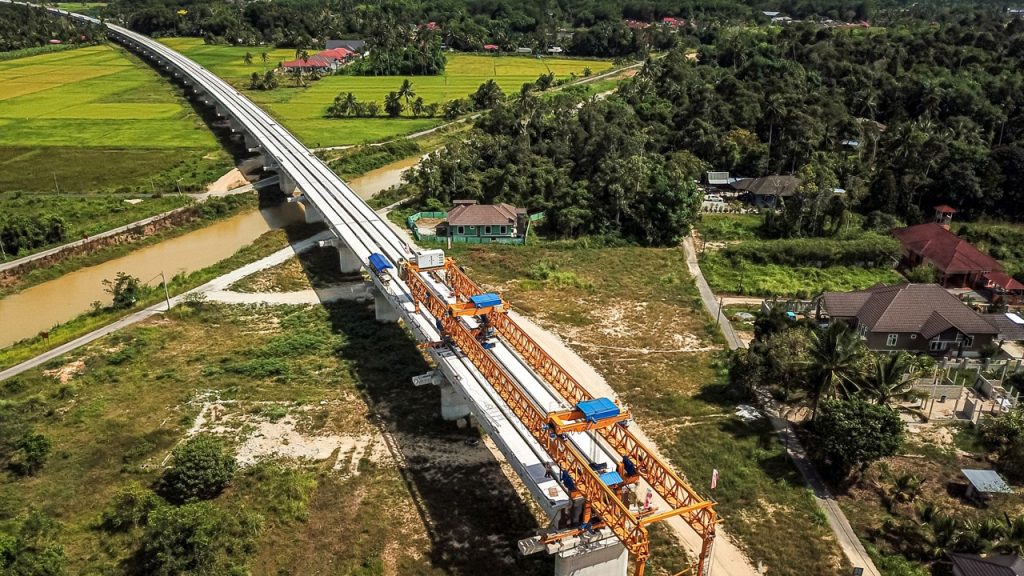Archaeologists in Malaysia conducted an excavation that lasted over a year in an area that will soon be flooded due to the construction of a hydroelectric power plant. The project began in March 2022 and concluded in October 2023, resulting in the discovery of over 70,000 artifacts, including skeletal remains in prehistoric burials dating back around 16,000 years. The investigation focused on caves in Malaysia’s Nenggiri Valley, with archaeologists uncovering stone tools, pottery, stone ornaments, and 16 individuals buried in 13 limestone caves at four separate sites. Fifteen of the skeletons were found in a “fully flexed” position, indicative of pre-Neolithic burials, while one skeleton was extended, pointing to a Neolithic lineage dated approximately 6,000 years ago. The most notable find was a fully intact human skeleton believed to be between 14,000 and 16,000 years old at Gua Keledung Kecil, which was described as the most complete and oldest of its kind in the country by the lead archaeologist Zuliskandar Ramli.
The discovery of these ancient artifacts provides insights into burial practices and human history in the region. Many of the items found were grave goods intentionally buried with the deceased, shedding light on the cultural beliefs and practices of these ancient civilizations. Archaeologists have stressed the importance of further research and investigation into the skeletons to uncover larger narratives and stories that these remains may hold. Similarly, in other archaeological finds around the world, such as in the ruins of Pompeii in Italy, skeletal remains have offered chilling details about the lives of those who perished, providing clues about their identities, relationships, and possessions at the time of their deaths.
During the excavation in Malaysia, the team discovered a wealth of historical artifacts, including pottery, stone tools, stone ornaments, and numerous skeletal remains. The fully flexed burial positions found at the site indicate pre-Neolithic traditions, while the presence of grave goods further emphasizes the cultural and spiritual significance of these burials. One skeleton found in an extended position dated to the Neolithic period, providing a glimpse into the changing burial practices over time in the region. This research contributes to our understanding of ancient Malaysian civilizations and their customs, highlighting the importance of preserving and studying archaeological sites before they are lost to development.
The upcoming flooding of the area due to the construction of the hydroelectric power plant presents a time-sensitive opportunity for archaeologists to excavate and document these valuable historical sites. The artifacts and remains uncovered during the investigation offer a window into the past, allowing researchers to piece together the stories of ancient civilizations in Malaysia. The completion of the power plant project by mid-2027 will mark the end of this chapter of archaeological exploration in the Nenggiri Valley, underscoring the urgency and significance of the research conducted by the team. The findings from this excavation will contribute to the broader understanding of prehistoric cultures in the region and provide valuable insights into the lives of ancient peoples in Malaysia.
The discoveries made by the archaeologists in Malaysia shed light on the ancient history of the region, highlighting the diverse cultures and burial practices of prehistoric civilizations. The excavation unearthed a wide array of artifacts and skeletal remains, including a remarkably well-preserved human skeleton believed to be thousands of years old. The presence of grave goods and the varying burial positions provide valuable clues about the beliefs and customs of these ancient societies, offering researchers a glimpse into their world. The imminent flooding of the area underscores the importance of conducting thorough archaeological investigations before these sites are lost to development, emphasizing the need to preserve and study Malaysia’s rich cultural heritage for future generations.
In conclusion, the archaeological excavation in Malaysia’s Nenggiri Valley has yielded a treasure trove of ancient artifacts and skeletal remains that provide valuable insights into the region’s prehistoric past. The findings offer a glimpse into the burial practices, cultural traditions, and daily lives of ancient civilizations in Malaysia, enriching our understanding of the diverse societies that once thrived in the area. The discoveries made by the research team underscore the importance of preserving and studying archaeological sites before they are lost to modern development, emphasizing the need to protect Malaysia’s cultural heritage for future generations. The completion of the hydroelectric power plant project in 2027 will mark the end of this phase of archaeological exploration in the Nenggiri Valley, highlighting the time-sensitive nature of the research conducted by the team and the significance of their findings for the field of archaeology.


